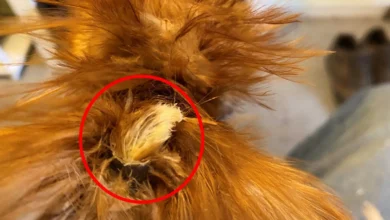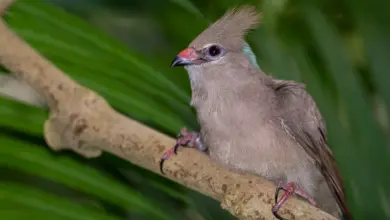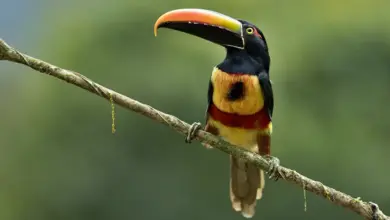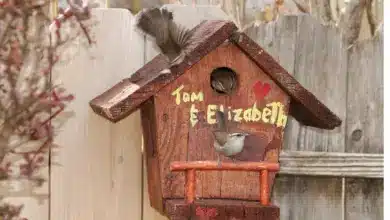The Yellow-browed Toucanets (Aulacorhynchus huallagae) are rare and endangered South American Toucans.
Distribution / Range
Yellow-browed Toucanets have a very small range with records existing from only two locations in north-central Peru – where it is uncommon in La Libertad and very rare in Río Abiseo National Park, San Martín. They mostly inhabit humid forests on the east Andean slope.
There are also recent reports from Leymebambe – a cloud forest region situated in the northeast of Peru. They may occur to the north or south, but these areas are mostly inaccessible and unexplored.
This species is threatened by habitat loss due to conversion of their habitat for agricultural purposes (coca seeds mainly – best known because of its alkaloids, which include cocaine).
They are fairly long-lived with a lifespan around 20 years.
Description
Yellow-browed Toucanets measure about 37 – 41 cm in length (including the tail). The plumage is mostly green except for a distinctive short yellow line behind each eye, a white throat and a blue chest-band. The central tail feathers have chest-nut colored tips. The under tail coverts (vent feathers) are bright yellow.
Similar Species:
They can be identified from other all-green toucanets by their different bill patterns, yellow vent and absent yellow eyebrows.
Calls / Vocalizations
The Yellow-browed Toucanets’ calls are described as monotonous, repeated short, dry rattling cuah cuah cuah that last about 2 seconds.
Breeding / Nesting
The mating ritual is a fun-loving affair for toucans, as they throw fruit to one another.
Like all of their other activities, nesting happens high up in hollow areas in trees. The bill is not effective for digging or any other type of extensive excavation work and so they must rely on holes already formed by other means.
The nests are not lined, but the two to four shiny white eggs that are laid each year rest on a few wood chips created while enlarging the opening or on various kinds of regurgitated seeds collected for this purpose. Parents share equally in incubation duties, but rarely sit on the nest for more than an hour at a time and the eggs are often left uncovered. Both parents share in feeding fruit to the babies for up to 8 weeks.
After 16 days the nestlings are born blind, with no trace of down on their pink skin. The bill is unremarkable until about 16 days old when it takes on the distinguishing features of the toucan, and requires up to four months to develop fully.Feathers begin to expand at 4 weeks.
Babies have pads on their elbows that protect their feet by keeping them elevated until they fledge.
Breeding in captivity requires attention to a number of details. Even successful breeders report rates as low as 30% for the incubation of eggs.



